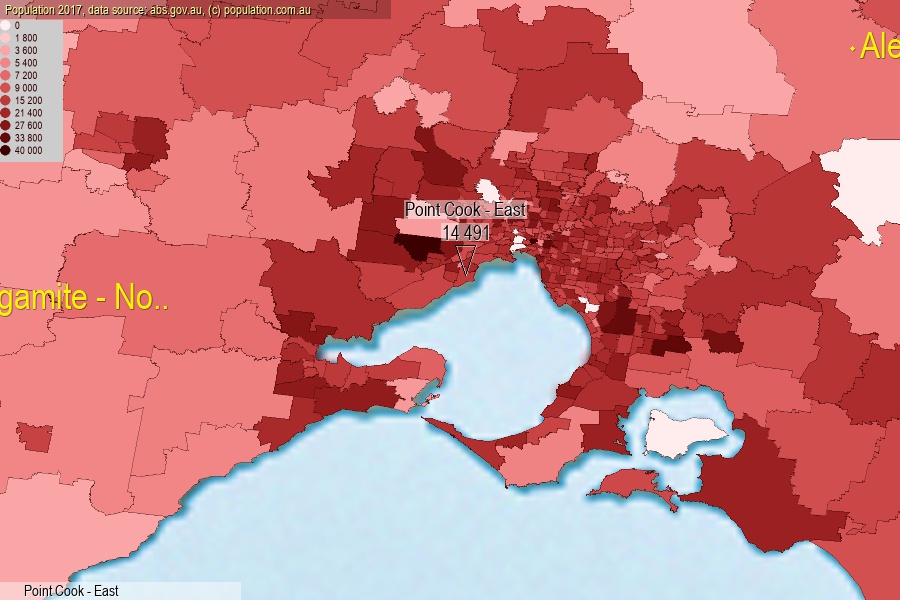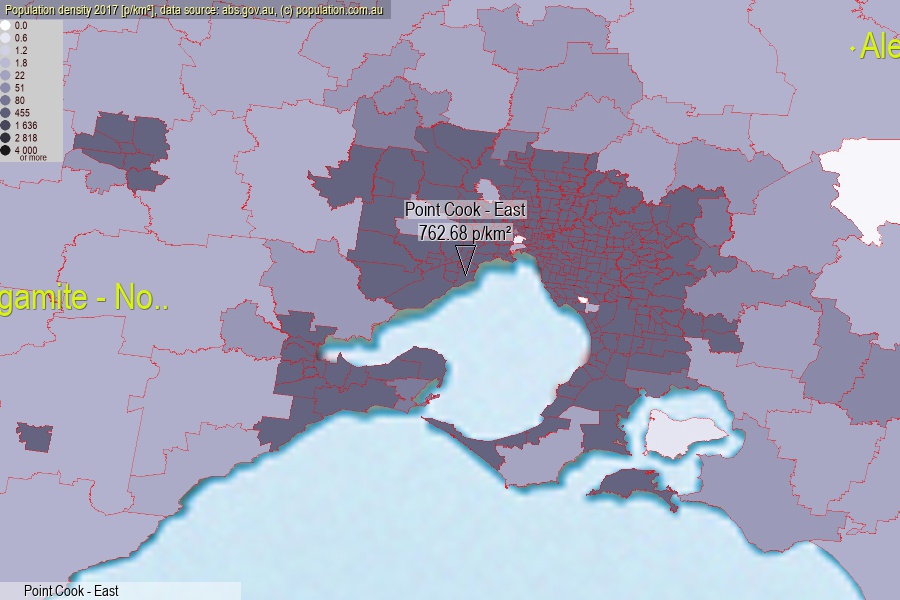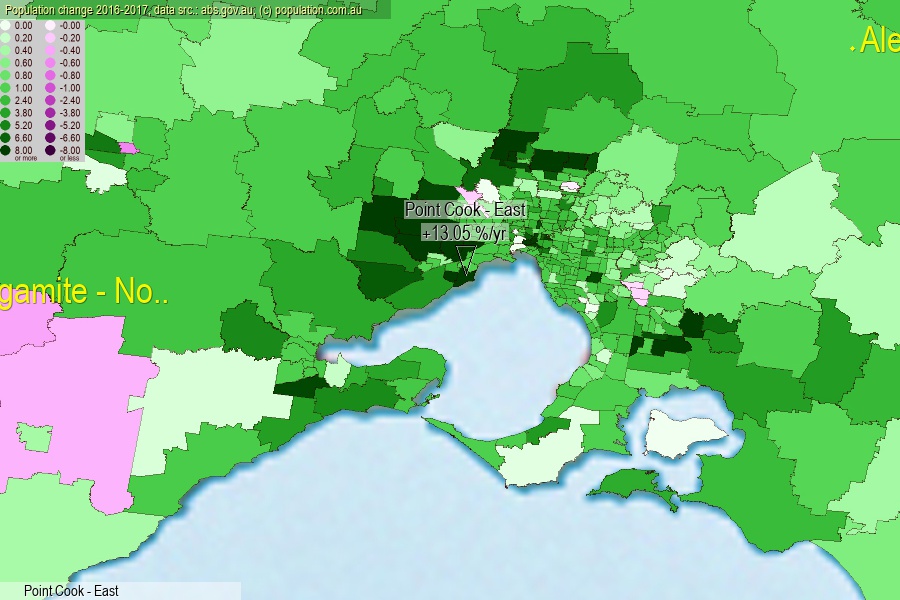 population.com.au
population.com.auLast official estimated population of Point Cook - East (as Statistical Area Level 2) was 14 491 people (on 2017-06-30)[2]. This was 0.06% of total Australian population and 0.225% of VIC population. Area of Point Cook - East is 19.00 km², in this year population density was 762.68 p/km² . If population growth rate would be same as in period 2016-2017 (+13.05%/yr), Point Cook - East population in 2025 would be 38 665. [0]



Click to enlarge. Point Cook - East is located in the center of the images.
Population [people], population density [p./km²] and population change [%/year] [2]
View borders » (new window) [4]
[2001-2002] +21.78 %/Yr.
[2002-2003] +47.66 %/Yr.
[2003-2004] +34.89 %/Yr.
[2004-2005] +39.95 %/Yr.
[2005-2006] +26.69 %/Yr.
[2006-2007] +21.58 %/Yr.
[2007-2008] +20.12 %/Yr.
[2008-2009] +12.73 %/Yr.
[2009-2010] +10.26 %/Yr.
[2010-2011] +6.55 %/Yr.
[2011-2012] +19.00 %/Yr.
[2012-2013] +14.27 %/Yr.
[2013-2014] +13.71 %/Yr.
[2014-2015] +11.31 %/Yr.
[2015-2016] +10.82 %/Yr.
[2016-2017] +13.05 %/Yr.
[0] Calculated with linear interpolation from officially estimated population
[1] Read more about SA2 and Australian Statistical Geography Standard (ASGS) on abs.gov.au
[2] Population data from Australian Bureau of Statistics (Population and density: 2017; change: 2016-2017)
[3] Digital Boundaries: Australian Statistical Geography Standard (ASGS) 2016.
[4] Border coordinates are simplifyed using Ramer-Douglas-Peucker algorithm.